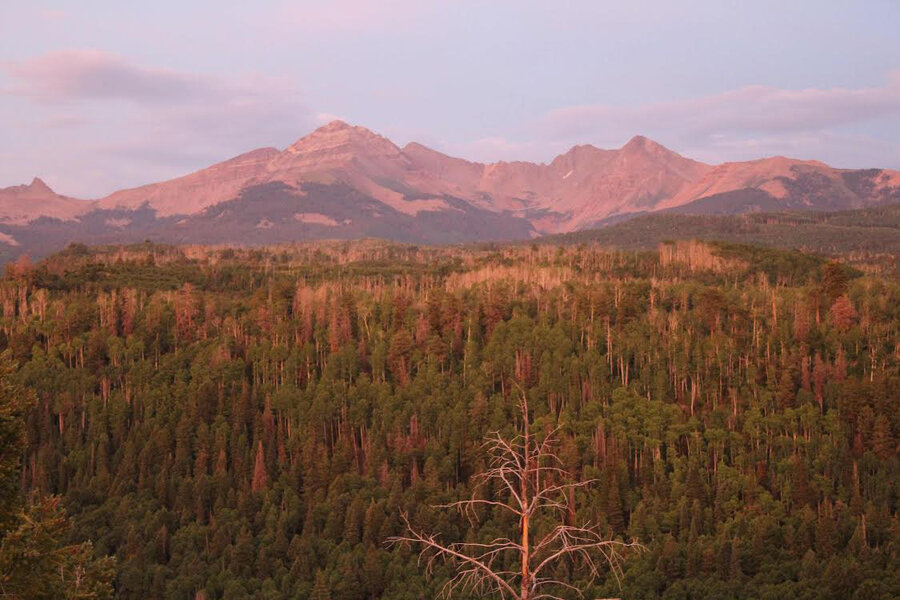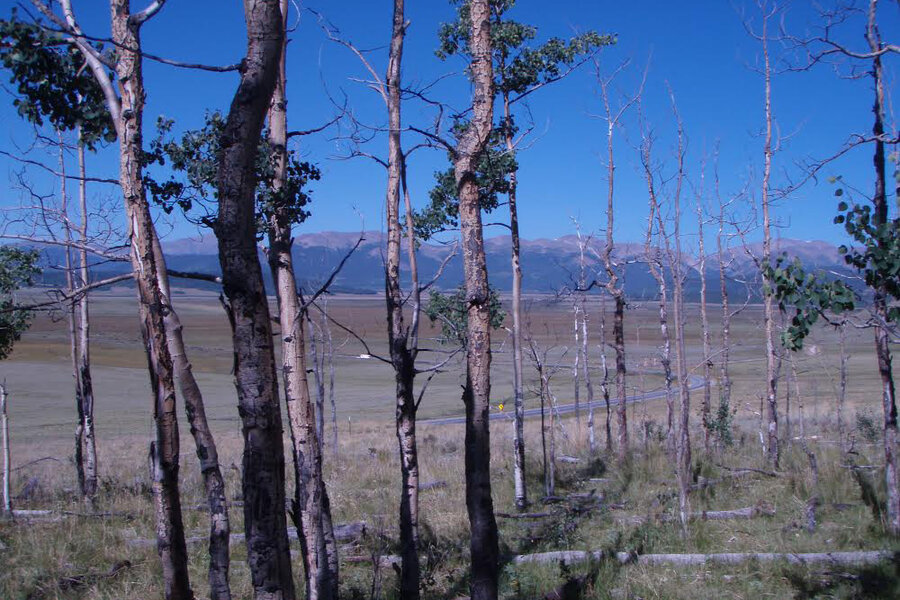Can forests rebound from severe drought?
Loading...
It's no surprise that droughts can severely weaken forests. But what happens when the drought ends?
Traditionally, climate models have operated under the assumption that forests bounce back quickly from periods of extreme stress. But new research, published Thursday in the journal Science, suggests that trees may take years to resume normal growth after a period of drought.
"It's probably not too surprising that trees don't seem to recover from severe drought immediately," lead author William Anderegg told the Monitor. "A large body of plant physiological research has studied drought stress and damage, and repair of that damage is rarely observed as perfect or immediate."
He added, "What surprised us was how widespread and pervasive this delayed recovery from drought was."
Dr. Anderegg, who studies climate change at Princeton University, found that living trees took an average of two to four years to recover post-drought. There was just one exception: California and Mediterranean regions actually grew faster after a drought.
"We don't have a clear answer as to why this was," Anderegg says. "One possibility is that these regions tended to be dominated by oak forests, and we found that oaks tended to recover relatively quickly."
Or maybe the droughts killed off some trees entirely, he theorizes, so the surviving trees had more light and nutrients available. "Without more detailed studies, we won't know for sure," he says.
Each year, forests take in about a quarter of all human carbon dioxide emissions. By absorbing CO2 and cycling oxygen back into the atmosphere, trees slow the progression of climate change. But Anderegg and colleagues found that trees take in significantly less carbon during and after drought.
"Forests are on average still taking up carbon," Anderegg says, but that could change.
"With more intense and frequent droughts, forests could spend more time recovering, and trees may start dying en masse from drought, fire, and infestations," he explains. "This has the potential to drive forests to become carbon sources to the atmosphere, which would accelerate climate change and start a vicious cycle."
More frequent drought and recovery cycles could cause serious long-term troubles. Anderegg worries that massive forest die-offs could become common as droughts become more prevalent and severe.
"We've seen instances of this occurring around the globe in the past decade or so, and the western US has really been a hotspot of widespread tree mortality," Anderegg says. "In some areas, other tree species that are more drought-tolerant could move in, but in some areas we might lose forests altogether if it gets too hot and dry."
But awareness is an important first step. These new findings could be used to develop more accurate climatological models. And according to Anderegg, both short and long-term measures can prevent forest loss and escalating climate change.
"At the largest scale, the sooner and more effectively that we address climate change, the less risks that forests will face. This is absolutely crucial," he says.
"At a smaller scale," he adds, "we can take steps to increase the resilience of forests to changes in climate. These include actions like restoring the natural density of trees – many forests in the western US, for example, have gotten too dense due to decades of suppressing wildfires – encouraging growth and management of trees in areas where they can persist, and minimizing other stresses on forests like overgrazing and wildfires."







